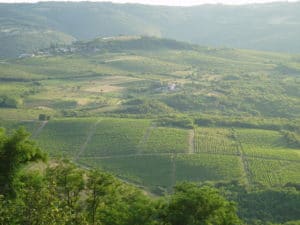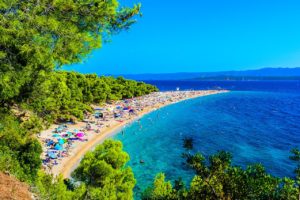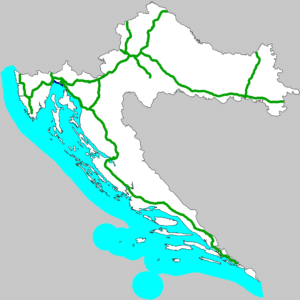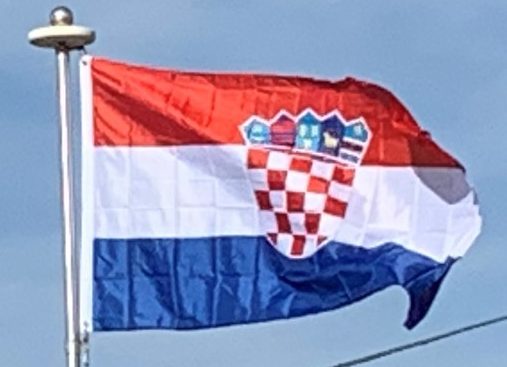
Privatization and the drive toward a market economy had barely begun under the new Croatian Government when war broke out in 1991. As a result of the war, the economic infrastructure sustained massive damage, particularly the revenue-rich tourism industry. From 1989 to 1993, the GDP fell 40.5%. The Croatian state still controls a significant part of the economy, with government expenditures accounting for as much as 40% of GDP.
Tourism dominates the Croatian service sector and accounts for up to 20% of Croatian GDP. Annual tourist industry income for 2017 was estimated at €9.5 billion. Its positive effects are felt throughout the economy of Croatia in terms of increased business volume observed in retail business, processing industry orders and summer seasonal employment. Since the end of the Croatian War of Independence, the tourist industry has grown rapidly, recording a fourfold rise in tourist numbers, with more than 11 million tourists each year. The most numerous are tourists from Germany, Slovenia, Austria, Italy, and Poland as well as Croatia itself. Length of a tourist stay in Croatia averaged 4.9 days in 2011.

The bulk of the tourist industry is concentrated along the Adriatic Sea coast. Opatija was the first holiday resort. It first became popular in the middle of the 19th century. By the 1890s, it had become one of the most significant European health resorts. Later a number of resorts sprang up along the coast and islands, offering services catering to both mass tourism and various niche markets. The most significant are nautical tourism, as there are numerous marinas with more than 16 thousand berths, cultural tourism relying on appeal of medieval coastal cities and numerous cultural events taking place during the summer. Inland areas offer agro-tourism, mountain resorts, and spas. Zagreb is also a significant tourist destination, rivalling major coastal cities and resorts.
Croatia has unpolluted marine areas reflected through numerous nature reserves and 116 Blue Flag beaches. Croatia is ranked as the 18th most popular tourist destination in the world. About 15% of these visitors, or over one million per year, are involved with naturism, an industry for which Croatia is world-famous. It was also the first European country to develop commercial naturist resorts.
Transportation:
The highlight of Croatia’s recent infrastructure developments is its rapidly developed motorway network, largely built in the late 1990s and especially in the 2000s. By September 2011, Croatia had completed more than 1,100 kilometers (680 miles) of motorways, connecting Zagreb to most other regions and following various European routes and four Pan-European corridors. The busiest motorways are the A1, connecting Zagreb to Split and the A3, passing east–west through northwest Croatia and Slavonia.

A widespread network of state roads in Croatia acts as motorway feeder roads while connecting all major settlements in the country. The high quality and safety levels of the Croatian motorway network were tested and confirmed by several EuroTAP and EuroTest programs.
